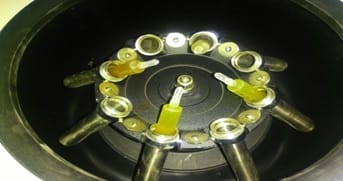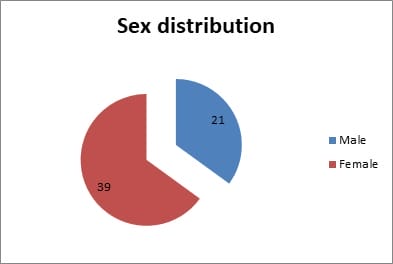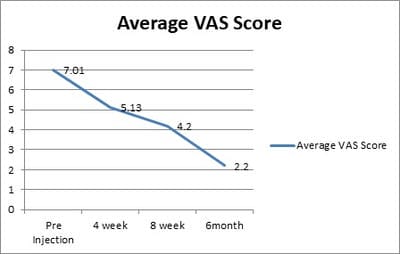The outcome of platelet-rich plasma injection therapy in chronic plantar fasciitis
Upadhyay S.1, Kumar Kirar S.2*, Varshney A.3, Singh S.4
DOI: https://doi.org/10.17511/ijmrr.2021.i02.09
1 Sanjay Upadhyay, Assistant Professor, Department of Orthopaedics, Atal Bihari Vajpayee Government Medical College, Vidisha, Madhya Pradesh, India.
2* Sunil Kumar Kirar, Senior Resident, Department of Orthopaedics, Atal Bihari Vajpayee Government Medical College, Vidisha, Madhya Pradesh, India.
3 Atul Varshney, HOD and Professor, Department of Orthopaedics, Atal Bihari Vajpayee Government Medical College, Vidisha, Madhya Pradesh, India.
4 Sanat Singh, Associate Professor, Department of Orthopaedics, Atal Bihari Vajpayee Government Medical College, Vidisha, Madhya Pradesh, India.
Background: Plantar Fasciitis is a frequently encountered problem in the everyday practice of orthopaedics. Treatment of Plantar Fasciitis is challenging to treating surgeon. Various conservative non-invasive treatment modalities are available like rest, casting, night splinting, NSAIDs. If conservative management fails then corticosteroid injection over the medial tuberosity of calcaneum is an effective treatment. But in recent years Platelet-rich plasma (PRP) has proved to be a safe alternative approach with less complication. This study aims to find out the effectiveness of PRP injections in Plantar Fasciitis. Material and Method: In this study, 60 patients with Plantar Fasciitis were included. Regular follow up was done at an interval of 4 weeks, 8 weeks and 6 months after PRP injection. Pain intensity was measured before and after injection on every follow up using the Visual Analogue Scale (VAS). Patients who have undergone at least 4 weeks of conservative treatment were included in the study. Results: After analysis of data, the average VAS score before injection was 7.01±1.35. Whereas at the end of the last visit (i.e. 6 months) average VAS score reduced to 2.2±1.25. This difference was statistically significant (ANNOVA test p <0.0001). Conclusion: we concluded that injection of PRP is a safe, convenient and effective approach to treat chronic Plantar Fasciitis.
Keywords: Chronic Plantar Fasciitis, Platelet Rich Plasma, Visual Analogue Scale
| Corresponding Author | How to Cite this Article | To Browse |
|---|---|---|
| , Senior Resident, Department of Orthopaedics, Atal Bihari Vajpayee Government Medical College, Vidisha, Madhya Pradesh, India. Email: |
Upadhyay S, Kirar SK, Varshney A, Singh S, The outcome of platelet-rich plasma injection therapy in chronic plantar fasciitis. Int J Med Res Rev. 2021;9(2):104-108. Available From https://ijmrr.medresearch.in/index.php/ijmrr/article/view/1280 |


 ©
© 


